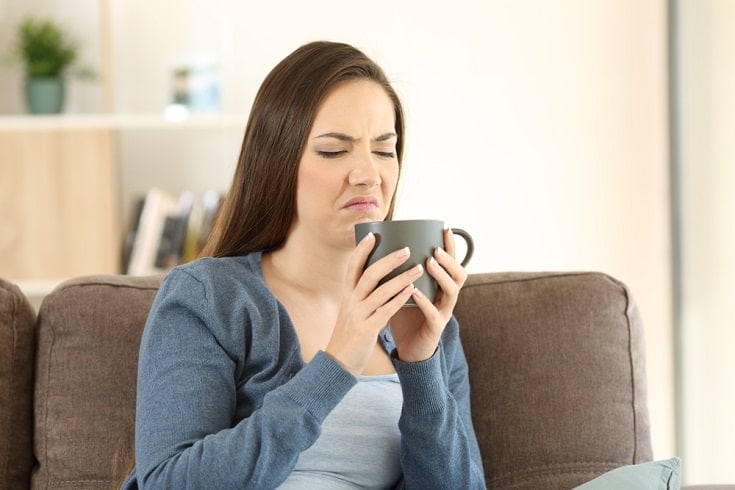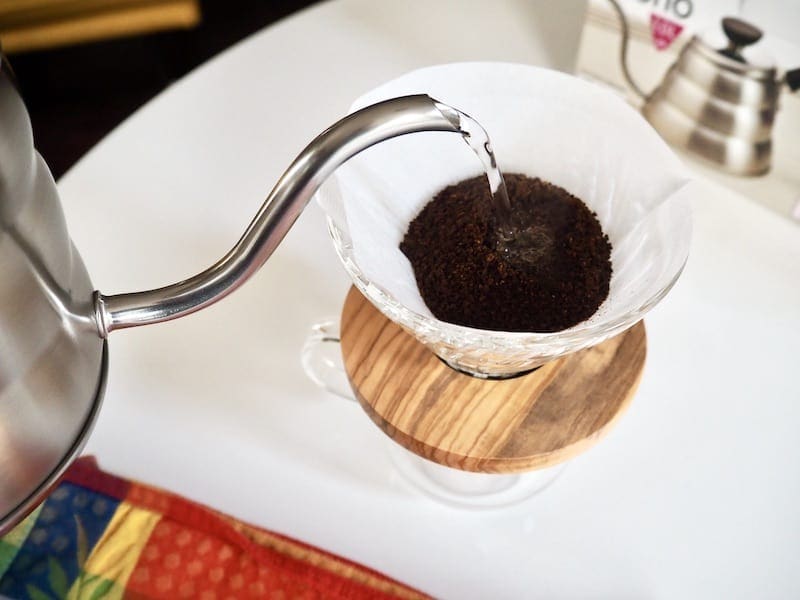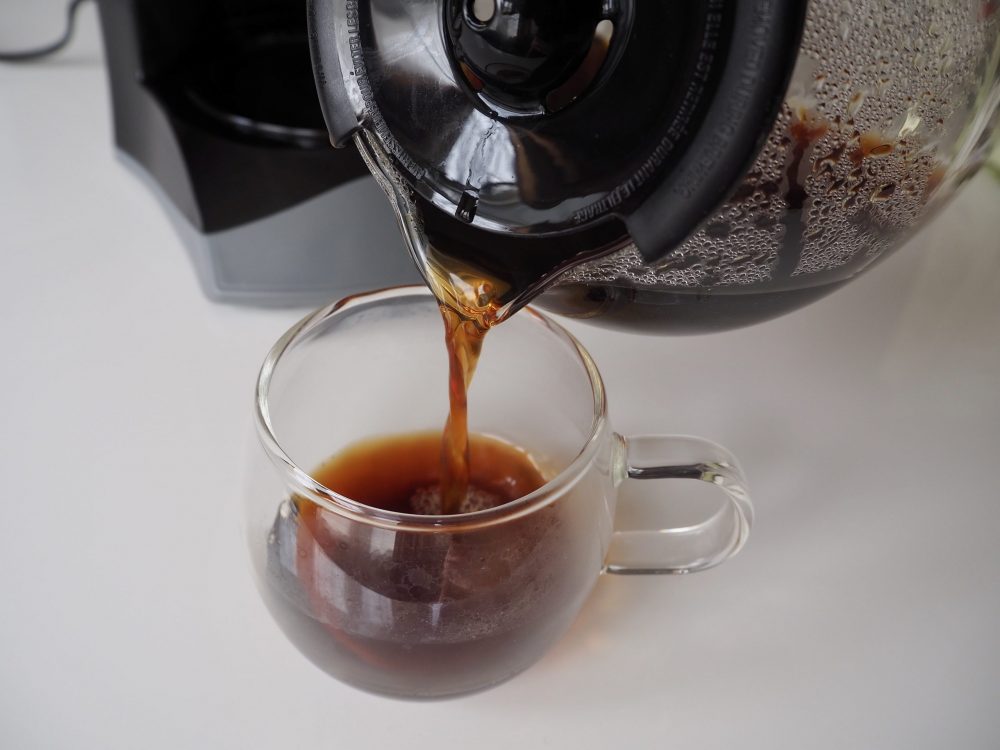
Every coffee drinker has experienced the disappointment of sitting down to enjoy a nice cup of coffee only to be met with a nasty, burnt cup instead. Sometimes, coffee tastes burnt because of the roast, and there’s nothing we can do about it. But most of the time, burnt flavors come from a mistake during the brewing process.
In this article, we give you some tips and tricks to help you avoid making burnt-tasting coffee and guide you through diagnosing your brewing process. Let’s begin!

Why Does Coffee Taste Burnt? Top 3 Reasons:
1. The Roast
Unfortunately, sometimes coffee will taste burnt because it’s simply poorly roasted. If your coffee is extremely dark, you probably won’t be able to avoid making a cup that doesn’t taste burnt. As the roast gets darker, more toasty, smoky flavors appear in your cup, and the likelihood of encountering burnt flavors increases.

Even if your coffee beans aren’t very dark, an inconsistent roast can also impart a burnt taste. Inconsistent roasts have some beans that are under-roasted and some that are over-roasted. The over-roasted beans will taste charred and smoky and leave you with undesirable flavors.
The best way to avoid roasting-related burnt flavors in your coffee is to purchase coffee from a reputable roaster. Every roaster has a bad batch every once in a while, but the best roasters consistently produce excellent, evenly roasted coffee beans. Shopping around and trying different roasters is the best way to find the coffee you like.
2. Water Temperature
If your brew water is too hot, it can create harsh, bitter tastes in your cup of coffee that most people find unappealing. These flavors are slightly different from the burnt taste you get from over-roasted beans, but they’re similar enough that some people conflate the two.

A common coffee misconception is that you should use boiling water to brew your coffee. In reality, the ideal temperature for making coffee is between 195º F and 205º F rather than 212º F boiling water. A 7-degree difference might not seem like much, but you would be surprised at how different coffee tastes when you use cooler water.
If you don’t have a thermometer, it can be tough to use the right brewing temperature. A good rule of thumb to follow is to let your water cool for 30 seconds before brewing. For most kettles and water heaters, this will get you close enough to 205 ºF.
The reason boiling water is not the best for coffee is because of how extraction works. Higher temperature water extracts more flavor but also different flavors than cooler water. Above 205º F, most of the additional flavor compounds extracted are strong, sometimes harsh flavors that most people don’t like. Bitterness is the number one hallmark of over-extraction from using boiling water, and many people easily confuse bitterness with a burnt taste.
3. Brew Method
Another important factor in diagnosing bitter coffee is to look carefully at the brewing method you use. Automatic drip machines are notorious for making burnt, bitter coffee for two main reasons. First, they typically use boiling water. Automatic coffee makers usually use built-in water heaters programmed to boil water before passing the water through the coffee grounds. Some more expensive machines give you control over the water temperature, and these generally make much better coffee than your standard countertop machines.

The second reason is channeling. Automatic drip machines usually don’t do a very good job of dispersing water evenly across the coffee grounds. As a result, some grounds get oversaturated while others stay mostly dry. Oversaturated coffee grounds cause over-extraction, much like how boiling water does. This means you get similar undesirable flavors in your coffee instead of a smooth, balanced cup.
A third, less common, reason has to do with the hot plates many automatic brewers have. If your brewer has a built-in warming plate, try not using it and see if that makes a difference. Leaving coffee on a hot plate continues the extraction process and quickly turns good coffee into a bitter, burnt mess.
If you like the taste of filter coffee in general but want to have more control, consider trying manual pour-over coffee. By taking control of the pouring process and using slightly cooler water, you can drastically improve your coffee’s quality with a little bit of effort.

Burnt Coffee: Conclusion
Burnt coffee is usually a solvable problem that you can fix by taking a few easy steps to tweak your brewing process. Sometimes, burnt coffee indicates over-roasted or inconsistently roasted beans, and, unfortunately, there’s nothing you can do in those situations. If you consistently make bitter coffee even after trying to apply the tips in this guide, we recommend looking for a new roaster. One bad batch can be forgiven, but consistently poor roasts are a sign of a bad roaster, and you are better off spending your money elsewhere.
SEE ALSO:
- How Long to Percolate Coffee (Expert Tips)
- Haitian Coffee: What You Need to Know
- Cheapest Way to Make Coffee: Brewing on a Budget
Featured Image Credit: Antonio Guillem, Shutterstock















